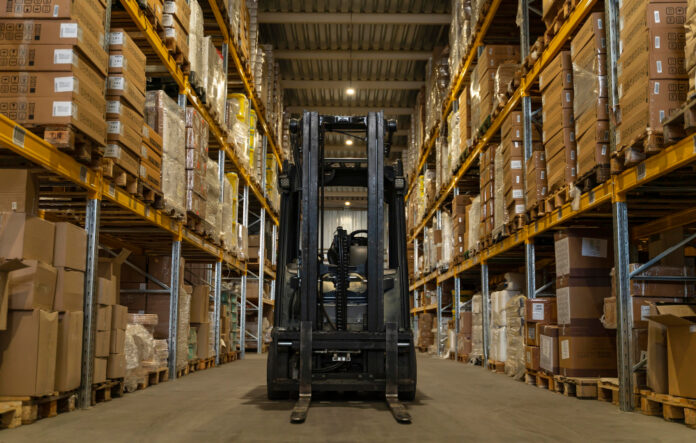Efficiency and workplace safety must exist hand-in-hand in warehouse operations and in the logistics industry as a whole. On one hand, warehousing businesses are constantly looking for ways to streamline their operations so they can continue meeting their quotas. On the other hand, these methods should never compromise the safety of warehouse staff. Thankfully, many solutions in the form of equipment and digital technologies have been adopted in warehouse operations that aim to tackle both issues at once.
The stacker forklift, also known as the pallet stacker, is an example of equipment that have both improve efficiency and workplace safety over the years, and modern iterations of it are now more compact, easier to operate, and equipped with advanced safety features like load sensors and automatic braking.
Here are seven advantages of using a contemporary stacker forklift for warehouse operations and how they can contribute to streamlined logistics operations.
1. Safer Lifting Mechanisms
Manually handling loads comes with risks for both the warehouse workers and the handled goods or materials. Lifting loads improperly can cause injuries such as muscle strains and sprains, and even long-term issues like chronic pain and a reduced range of motion. Improper lifting can also tilt loads out of balance, resulting in damaged goods. A stacker forklift provides a stable foundation for lifting heavy loads without strain on the operators, minimising the risk for both the employees and the inventory.
2. Enhances Space Efficiency
A warehouse or storage facility with too little space can quickly turn into a giant workplace hazard. Without ample space in the workplace, warehouse workers become more susceptible to accidents and injuries such as trips or slips. A stacker forklift can help with this issue by allowing goods to be stacked vertically without causing further safety concerns. It is also able to secure tall, stacked loads without the risk of causing tip-overs. This helps free up some space in the storage facility, which, in turn, creates an overall safer working environment for the staff because of reduced risk of accidents caused by cluttered aisles or unstable loads.
3. Improves Pallet Stability
Stacking loads can potentially be a workplace hazard if done incorrectly. Unbalanced or improperly handled loads, as mentioned, have a chance of tipping over, which can both damage goods and cause workplace accidents and injuries. The precision of a stacker forklift prevents this from happening, as it can perfectly stack and balance pallets while reducing the risk of tip-overs. Eliminating such errors means the warehouse staff are able to mitigate the risk of workplace incidents, product losses, operational delays, equipment damage, and other costly consequences that can arise from unstable pallet stacking practises.
4. Easier Manoeuvrability in Tight Spaces
Even with safer space efficiency, storage facilities can still have tight spaces and narrow aisles. Traditional forklifts are often too large to operate in these spaces and could result in collisions. Thankfully, pallet stackers have a compact design that allows easy operations in confined areas. With the right training, stacker forklift operators can easily navigate through a busy warehouse without risking any workplace accidents.
5. Reduces Physical Exertion from Warehouse Staff
Using manual handling techniques for warehouse operations will likely result in both physical and mental fatigue for warehouse workers. In the long run, it can even cause strain and long-term damage to their physical health. Manual material handling is also much slower than using any machinery or equipment, drastically affecting efficiency and productivity.
Stacker forklifts remove the need for manual handling completely, making it much easier and more efficient for warehouse staff to meet their quotas. The controls of modern units are also ergonomic, making them less strenuous for operators to use during repetitive tasks. They also prevent chronic exhaustion, keeping workers alert and helping them avoid any potential errors or accidents.
6. Increased Cost-Efficiency
While mechanised stacker forklifts can have a heavier initial investment cost compared to manual stackers, the increase in efficiency and productivity will quickly compensate for the expense. They also don’t require much maintenance with proper daily care, turning it into an even more cost-efficient investment for warehouse operations. Additionally, pallet stackers greatly reduce the risk of workplace injuries, helping businesses avoid costs related to medical expenses, compensation, legal issues, insurance claims, and workflow disruptions.
7. Compliance with Safety Standards
Pallet stackers and other machinery and equipment used in the logistics industry are essential for ensuring compliance with health and safety regulations. Equipment such as stacker forklifts are designed with workplace safety guidelines in mind and include features such as easy-to-learn and ergonomic controls as well as secure lifting mechanisms. Not only do these features generally avoid potential workplace incidents that will require worker’s compensation, but they also shield businesses from any potential legal issues.
Stacker Forklifts Are a Necessity For Warehouse Operations
Technology has advanced enough that making use of the available solutions has become a necessity for workplace safety, productivity, and efficiency. Pallet stackers and other types of forklifts have become an essential part of warehouse operations to keep both inventory and the warehouse workers safe and unharmed throughout the workday. While they do require an initial investment cost, it’s no doubt that their numerous benefits for maintaining a safe yet productive working environment make them well worth the cost.
Find a Home-Based Business to Start-Up >>> Hundreds of Business Listings.














































